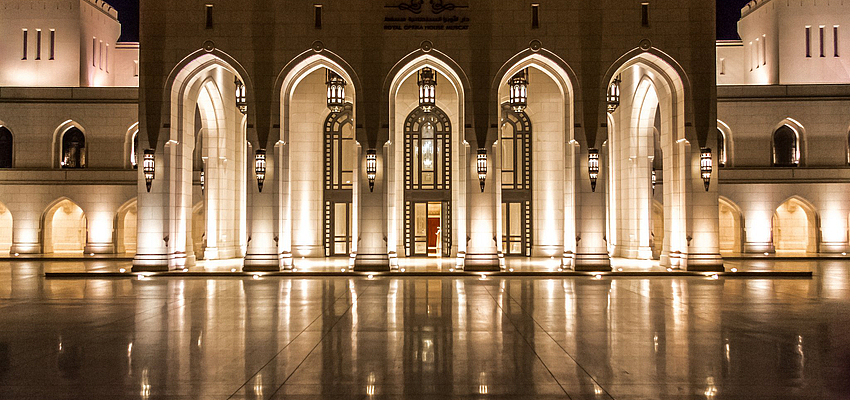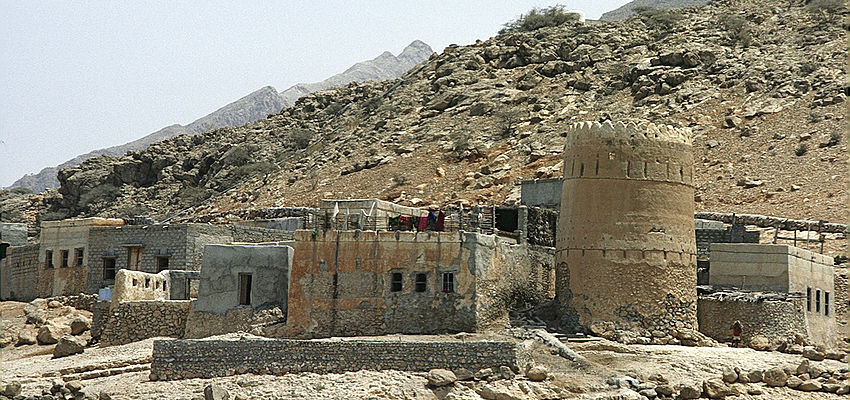


During a trip to Oman you will discover a country that is full of legends and myths that are always very much present in the minds of travellers.
With a little less than 310,000 square kilometres, during your trip to Oman you will discover one of the most beautiful and fascinating countries of the Middle East. The Sultanate of Oman, whose capital is the city of Muscat, shares its borders with the United Arab Emirates to the north-west, Saudi Arabia to the west and Yemen to the south-west. To the east, Oman possesses 1700 kilometres of coastline on the Arabian Sea, the Gulf of Oman and a tiny part on the Persian Gulf with the Strait of Hormuz. The highest peak of the Sultanate of Oman, the Jebel Shams, rises to 3009 metres altitude. Regarding the landscape, apart from the coast and mountains, 80% of the territory is covered with a huge desert.

The climate in Oman is more varied than one would think for such a desert zone. If inland there really is a desert climate, it is hot and humid on the coast and the south was suffers from the effects of the monsoon. In general, there are two distinct seasons in Oman: the winter, which lasts from November to February, and the summer, from March to October. In winter the temperatures are on average 25 °C and in summer they rise to over 45 °C.
With 80% of desert covering the territory, the Sultanate of Oman nevertheless possesses a rich and varied wildlife. Among the mammals, there is of course the very emblematic oryx, which is now a protected species, the thar, which is a sort of ibex, and the daman, which is a rabbit. Among the predators you will see wild cats, more rarely a leopard, and with an extraordinary stroke of luck you might observe a cheetah. In the air, a little more than 400 species pass this way every year during their migration. In the water, you may be lucky enough to see dolphins and humpback whales.
The flora is not very rich but you will see coconut palms, boswellias, which are emblematic of Oman and especially thousands of date palms, whose exquisite fruit you will certainly enjoy.